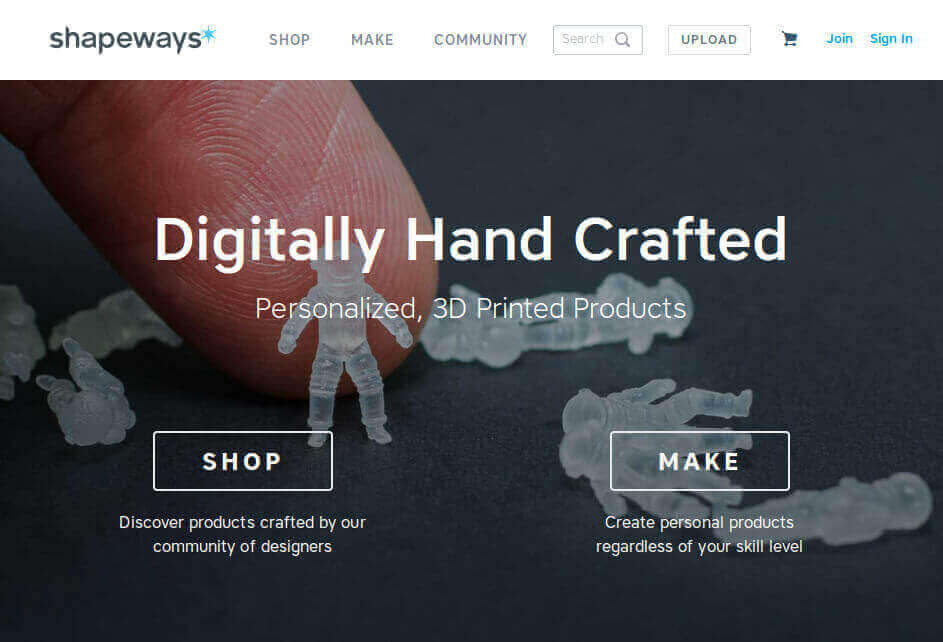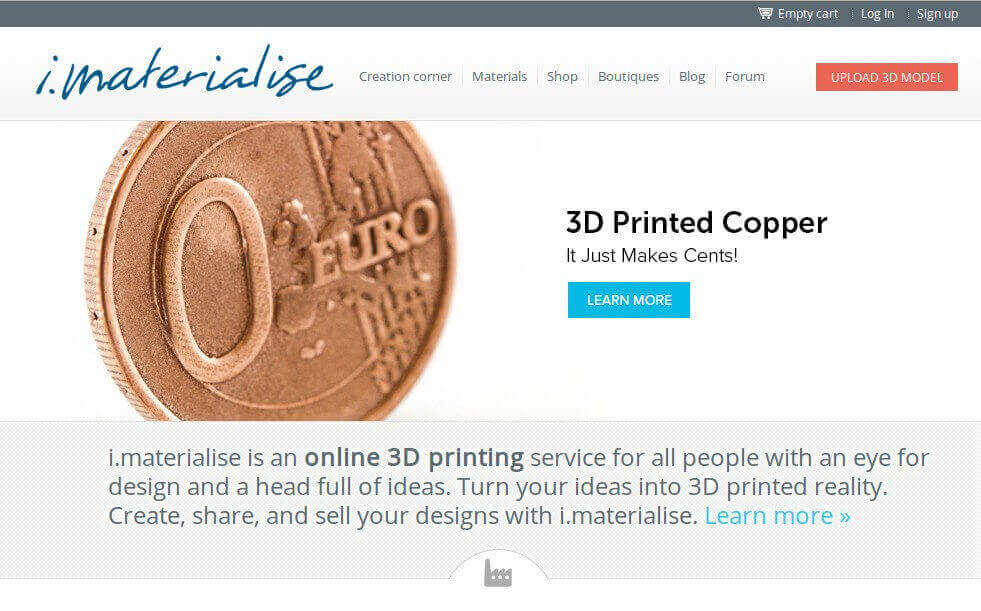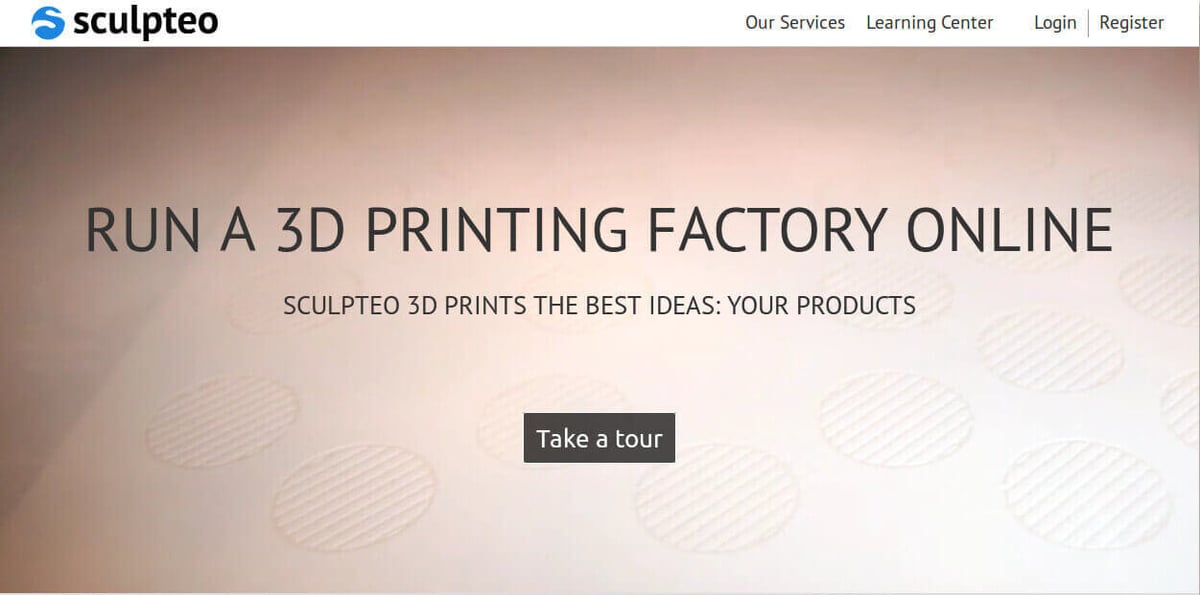With 3D printing becoming so popular, it’s hard to keep track of all the options. With this article, we provide an overview of the main plastic 3D printer technologies and services.
With 3D printing you can create models out of many different materials. The most common are thermoplastics, but there are many different ways to 3D print plastic. This article explains the different technologies and presents a number of 3D plastic printers and services for professional 3D plastic printing.
With any of the following technologies, the first step is always to create a digital model. This 3D object gets transformed into a mesh file, usually an STL or OBJ file if you want to print composed colors. The mesh is then sliced into thin layers by 3D printing software and the resulting G-Code data is sent to the printer so the 3D printing can begin!
1. Plastic 3D Printer Technology: FDM
Fused deposition modeling (FDM) is the most common technology used to 3D print in plastic. The basic principle is to deposit layer upon layer of plastic until you reach the final 3D object.
Looking at the process in a little more detail, the first step is to heat up thermoplastic filament in the 3D printer’s hot end. The resulting molten plastic is ejected out of a nozzle as a thin wire. Both the hot end and the nozzle are located in a module called the print head. It moves in the horizontal (XY) plane to “draw” a 2D image and vertically (in the Z direction) to continuously repeat the process.
To reduce printing time and material consumption, typically only the outer walls are printed in full strength. The inside consists of a honeycomb-like framework called infill.
If your 3D model consists of overhanging parts, printing will require support structures on the outside. Normally these are automatically generated by the slicer. Later, supports are pulled, cut or dissolved from the object.
The most common 3D printed plastic is PLA (polylactic acid), which is cheap, degradable and easy to 3D print. ABS (acrylonitrile butadiene styrene) is next on the list. Though stronger and more durable, it tends to be much trickier to print. PETG (polyethylene terephthalate) is another common material. In practice, it’s a combination of the ease-of-use of PLA and the strength and durability of ABS.
What 3D prints are use for depends on the material used, but many FDM 3D printed plastic parts are great for prototypes, rough spare parts and tools.
2. Plastic 3D Printer Technology: SLA
If you’re looking for a smooth surface and high precision models, stereolithography (SLA) is for you.
This 3D printing process works by hardening layer after layer of a liquid resin. When exposed to a laser, the photopolymer cures, hardening and linking to the previous layer. Following each layer, a recoater wipes new material on the surface, in preparation for the next layer to be cured.
Similar to FDM, if your model has overhangs, you’ll need to print a supporting structure. As this structure consists of the same material as the model, it has to be mechanically removed.
Unlike FDM, the entire model consists of full material strength. With SLA you can 3D print elastic and transparent plastics, casting wax and models with very high surface quality.
Within the realm of SLA 3D printing is digital light processing (DLP). It is essentially the same as SLA but uses a projector as a light source instead of a laser. The primary difference is that DLP printing can be faster, given that an entire layer can be exposed to UV light at once.
3. Plastic 3D Printer Technology: PolyJet
PolyJet technology, coming from Statasys, produces 3D prints by rapidly spraying and curing liquid photopolymer in a layer by layer fashion. The resin is applied using an inkjet printing head.
This process is also known as Polyjet and Inkjet technology. Plastics are 3D printed like printing with a Inkjet printing head which places small particles of light curing plastic on a print bed. This layer is then hardened with UV light, the build plate retracts by one step and a new layer is applied. The layer thickness is 0,015 mm like the SLA technology.
In addition to being faster than SLA, PolyJet comes with several other advantages. First, because it is a more controlled process, able to print with various colors. And unlike both FDM and SLA, there’s no need to mechanically remove the support structure, as the support material simple does not harden in the process and can be washed or blown away.
The plastic 3D printed models made with PolyJet systems have a high surface quality and can be elastic. Example applications include springs, clinches and casting models. You can also 3D print clear materials (e.g. VeroClear) for lenses or frames.
4. Plastic 3D Printer Technology: SLS
Selective layer sintering (SLS) uses powdered material as input, selectively fusing particles together, layer by layer.
The entire process takes place in a heated pressure chamber. At first a thin layer of powder is wiped over the build plate before a laser melts the particles in the desired spots. The build plate is then lowered and the process repeats.
A huge advantage of SLS is that overhangs and floating objects don’t need support structures. That’s because dense powder surrounds the 3D print until its finished, providing support before the redundant material gets vacuumed off and reused.
With SLS, it’s also possible to print a large quantity of models in one cycle, reducing total printing time.
3D objects printed using SLS are very dense and have very high stability. The surface quality is decent, but can be polished and coated with varnish. The most common material used with SLS is PA (polyamide) which can also be infused with aluminum, glass or carbon fiber, resulting in better wear or chemical resistance. This 3D plastic printing technology is great for spare parts, prototypes and functional components.
5. Vacuum Casting for Plastics
Vacuum casting is a process suitable for producing low quantity serial parts. At first a master form (of the final part) with high surface quality is 3D printed in, for example, SLA. When creating a model to be cast, one must take inlets into account and avoid sharp edges.
Silicon is poured around the model to create a reusable mold. The plastic to be injected is then stirred in a vacuum chamber, so that all excess air is removed from the material. Once complete, the plastic is poured into the mold and set in an oven to set. The finished part is removed from the mold and post-processed.
Castable materials include ABS, PA and PP (polypropylene), but one can also use rubber or silicon. Resulting parts have a high surface quality and properties range from elastic to stiff. You can also cast two materials on top of each other, resulting in a combination of hard and elastic parts in a single model.
6. 3D Plastic Printers For Your Home
The most common household 3D plastic printers are FDM printers, as they are fairly cheap — some as low as $100 — and easy to use. To find out about some of the best 3D printers on the market right now, take a look at this article.
The filament is also easy and safe to store, whereas the resin for SLA printers has to be stored between 18°C and 30°C and requires careful handling.
On the other hand, if you’re printing a lot and desire very high surface quality, household SLA 3D printers are perfect. They start at around $500 and a liter of resin at $150. In many cases you can only use the manufacturer’s resin, but there are exceptions. Check out this article for the 20 best resin 3D printers.
3D plastic printers with PolyJet or SLS technology can cost over $10,000 and are rentable at high piece counts per cycle. Therefore, if you’re interested in either technology, it’s probably best to turn to a 3D printing service.
7. 3D Printing Services
If you’re looking for a high quality 3D print, either you have to invest a lot of money in your own plastic 3D printer or spend a lot of time calibrating, or both. This changes when turning to professionals, who have access to industrial grade machines, give advice on settings and properties, and post-process your model to perfection.
With All3DP’s price comparison you can find the best price to get your model printed. Simply upload your model as an STL file and select your desired material.
7.1. Shapeways

The service Shapeways shines with their fast delivery, wide choice of 3D printable materials, and excellent print quality. Their offered materials include PLA, ABS, castable wax, elastic plastics, copper, ferrous metals, allows and even gold or platinum. They print plastic using FDM, SLA, SLS or PolyJet technology.
When using their service, your models will first be checked for printing possibility, after which you may be advised on improvements. Even if you neglect their advice, they’ll print your model up to three times, but will not hold themselves accountable for printing failure.
If your model fits within their plastic 3D printing capacity, they’ll make your print happen! Through Shapeways, you can also present your print to the public and sell it.
To print with Shapeways, simply upload your desired STL file to their website or compare the price to services i.materialise and Sulpteo with All3DP’s Price Comparison Service.
7.2. i.materialise

i.materialise is a spin-off company from the industrial client-exclusive printing service Materialise. With i.materialise they offer their industrial experience to the public. And while they may not offer such a wide variety of materials as Shapeways, their resin options are many more.
Their materials range from plastics to metal-infused plastic to metals and precious metals. Their plastic offerings include ABS, PA, aluminum-infused and multicolor PLA, while resin comes in transparent, high detail and tough mammoth grade.
The technologies offered by i.materialise for plastic 3D printing are FDM, SLA, PolyJet, SLS and HP’s Multi Jet. Like Shapeways, i.materialise also allows you to sell your printed model to the public.
To print with i.materialise, simply upload your desired STL file to their website or compare the price to services Shapeways and Sulpteo with All3DP’s Price Comparison Service.
7.3. Sculpteo

Sculpteo has printing plants stationed in Paris and San Francisco and offers a wide variety of plastics, resins and metals. With their SLS, SLA, PolyJet, and Multi Jet printers, you can chose from PA, flexible and carbon-infused PLA, resins and multicolor plastics.
Their extensive technical documentation will help you detect design flaws and choose the right material for your project. With Sculpteo, you can also open your own shop front and sell your models to the public.
To print with Sculpteo, simply upload your desired STL file to their website or compare the price to services Shapeways and i.materialise with All3DP’s Price Comparison Service.
License: The text of "Plastic 3D Printer Technologies and Services – An Overview" by All3DP is licensed under a Creative Commons Attribution 4.0 International License.
